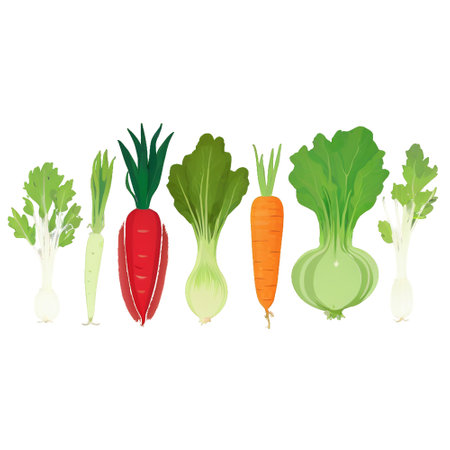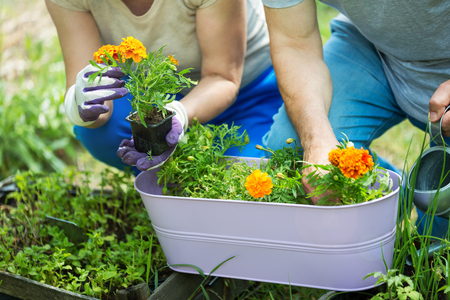Understanding the British Winter Climate
The British winter is a gentle yet challenging partner for gardeners, offering its own rhythm and character. Our islands are known for their unpredictable weather, with mild temperatures in the south and chillier spells in the north. Short days, frequent rain, and occasional frost define this season, creating a unique environment for winter vegetables to thrive or struggle. The soil often remains damp, and light can be scarce, so knowing how these patterns shape your patch is essential. Embracing these quirks of British weather helps you choose the right crops and plan your vegetable patch with care, ensuring each little seedling stands the best chance to grow strong—even when the garden seems asleep. Let’s journey together through winter’s embrace, learning from nature’s cues as we nurture our family patch through the season.
2. Selecting Hardy Winter Veggies for Your Patch
When the British winter arrives, your vegetable patch can still thrive with the right selection of hardy crops. Choosing resilient varieties is essential for success in frosty, damp conditions. Traditional British favourites such as kale, leeks, and Brussels sprouts are perfectly suited for winter growing—these vegetables not only survive but often improve in flavour after a touch of frost. Kale’s curly leaves become sweeter, leeks develop a milder taste, and Brussels sprouts reach their peak crispness and taste as the cold sets in.
Spotlight on Classic British Winter Crops
| Vegetable | Best Variety for UK Winters | Top Tips |
|---|---|---|
| Kale | Winterbor, Red Russian | Harvest outer leaves regularly to encourage new growth. |
| Leeks | Musselburgh, Bandit | Earth up stems to blanch and protect from frost. |
| Brussels Sprouts | Brigitte F1, Bedford Fillbasket | Peg plants if windy; pick sprouts from the bottom up. |
Choosing the Right Varieties
Selecting robust varieties specifically bred for UK winters is key. Look for seeds labelled as winter-hardy or those with proven local performance in your region. Visit local garden centres or talk to experienced allotment holders for recommendations tailored to your area’s microclimate.
Plant with Family Traditions in Mind
Growing these time-honoured vegetables connects us to generations past. Involve your children by letting them pick their favourite veggie to nurture—watching kale unfurl or sprouts swell can spark a love of gardening that lasts beyond winter. Remember, each plant tells its own story through the seasons—just like family memories sown and grown together.

3. Preparing Your Soil for the Colder Months
As autumn settles in and the leaves start to carpet our gardens, it’s the perfect time to give your soil some extra love before winter arrives. A well-prepared soil is like a cosy duvet for your vegetables—it keeps them nourished, protected, and ready to thrive even as the temperature drops. Here are some essential tips for enriching your soil in autumn, ensuring your winter vegetable patch gets off to the best possible start.
Clear Away Summer’s Leftovers
Begin by removing any spent crops, weeds, and debris from your beds. Not only does this tidy up your patch, but it also helps prevent pests and diseases from overwintering and causing trouble next season. Take a moment with your little ones to spot any hidden snails or bugs—they’ll enjoy being garden detectives!
Add Organic Matter
Autumn is the ideal season to dig in well-rotted manure or homemade compost. This not only boosts the nutrients in your soil but also improves its structure, helping roots to breathe and water to drain away properly during those soggy British winters. Encourage children to help scatter compost and mix it into the earth—it’s a lovely way to share stories about how kitchen scraps transform into plant food.
Mulch for Warmth and Protection
Lay a generous layer of mulch—like leaf mould, straw, or wood chips—over bare soil. This acts as a natural blanket, keeping warmth in and suppressing pesky weeds. Mulching is a great hands-on activity for young helpers; you can talk about how earthworms will pull bits of mulch underground, working hard while we’re indoors with a cuppa.
Test Your Soil pH
If you haven’t done so recently, autumn is a brilliant time to test your soil’s pH. Most winter veg prefer slightly acidic to neutral soils (around 6.0–7.0). If needed, add lime to raise the pH or sulphur to lower it—think of it as fine-tuning your garden’s recipe for success.
By nurturing your soil now, you set the stage for hearty brassicas, sweet parsnips, and crunchy carrots through the darkest months. Remember: healthy soil equals happy plants—and even happier harvests come springtime!
4. Protecting Your Patch from Frost and Pests
When the British winter rolls in, safeguarding your vegetable patch becomes just as important as what you plant. Temperatures can dip sharply and opportunistic pests may be seeking a cosy meal, so a little preparation goes a long way in protecting your hard work. Here are some time-tested UK methods to keep your crops snug and safe.
Shielding Against Frost
Frost is a familiar foe for any UK gardener. It’s crucial to provide an extra layer of warmth for tender seedlings or hardy greens alike. Garden fleece, widely available at garden centres, is lightweight and easy to drape over beds. If you’re looking for something more robust, cloches or cold frames create mini-greenhouses that retain heat beautifully. Even recycled household items—think old net curtains or clear plastic bottles—can do the trick in a pinch.
Popular Frost Protection Methods in the UK
| Method | Best For | Notes |
|---|---|---|
| Garden Fleece | Brassicas, lettuces, root veg | Easy to use, reusable each season |
| Cloches & Cold Frames | Seedlings & young plants | Good for very cold snaps; protects from wind too |
| Mulching (straw/leaves) | Root vegetables | Keeps soil temperature stable and locks in moisture |
Naturally Deterring Pests
Pests don’t take a winter holiday, so it’s wise to stay one step ahead using organic and family-friendly methods popular in British gardens. Encourage garden birds and hedgehogs, natural pest controllers, by keeping feeders topped up and providing shelter. Deploying beer traps for slugs, scattering crushed eggshells or horticultural grit, and companion planting—like interplanting garlic with carrots—are simple yet effective strategies.
Organic Pest Control Methods
| Method | Pest Targeted | How It Works |
|---|---|---|
| Beer Traps | Slugs & Snails | Lures them away from crops into containers filled with beer |
| Encouraging Birds/Hedgehogs | Caterpillars, slugs, beetles | Create wildlife-friendly spaces; natural predators keep pests down |
| Companion Planting (e.g., onions with carrots) | Aphids, carrot fly | Certain plants repel specific pests when grown together |
A Family-Friendly Approach
Getting children involved in protecting your patch can be both fun and educational—let them help set up fleece covers or check beer traps on chilly mornings. With these practical tips rooted in UK gardening tradition, your winter veg can flourish despite the cold and critters outside.
5. Creating a Cosy Family Gardening Routine
Winter gardening in the UK can be a magical way to bring the family together, even when the days are crisp and frosty. Establishing a cosy gardening routine not only helps your winter vegetable patch thrive but also nurtures precious moments with your loved ones.
Bundle Up for Garden Adventures
Start by making getting ready part of the fun. Encourage everyone to layer up in their warmest jumpers, woolly hats, and wellies. Hand out mugs of hot chocolate or warm spiced apple juice before heading outdoors—it sets the tone for a special family adventure. Little rituals like this turn chilly tasks into something everyone looks forward to.
Set Weekly Garden Goals Together
Gather around the kitchen table to plan what needs doing each week in your patch. Children love ticking off small jobs—whether that’s planting broad beans, mulching beds, or checking on overwintering carrots. Assign each person a task, so everyone feels involved and proud of their contribution.
Turn Chores into Challenges
Make weeding races or scavenger hunts for winter wildlife part of your routine. Who can spot the first robin or find the longest earthworm? You could even keep a family garden diary, jotting down what you’ve planted and any little discoveries along the way—building memories as well as vegetables.
Create Warming Traditions
After gardening, gather indoors for a hearty British tea with homemade scones or toasted crumpets. Share stories about what you did in the garden or dream up recipes you’ll make with your home-grown veg come spring. These simple traditions make gardening in winter less about braving the cold and more about enjoying quality time together, inspired by nature’s quiet resilience.
6. Planning for Year-Round Harvests
If you dream of enjoying homegrown vegetables from your garden throughout the seasons, a little forward thinking can go a long way. Successional sowing is a wonderful way to keep your patch productive and ensure a steady supply of fresh veg, even during the colder months. By staggering your plantings and integrating winter crops into your annual growing calendar, you’ll create a patch that offers something delicious all year round.
Successional Sowing: Little and Often
Rather than sowing everything at once, try sowing small batches of seeds every couple of weeks. This technique helps to avoid gluts and gaps in your harvest. For example, you might sow carrots or salad leaves regularly from late summer into early autumn for pickings well into winter. It’s a bit like planning family meals – spreading things out keeps everyone happy and well fed!
Integrating Winter Crops Into Your Calendar
As you plan your year, make space for hardy veg like kale, leeks, and winter spinach. These resilient plants don’t mind the cold and can be sown in late summer or early autumn to provide nutritious greens when other crops have faded. Mark out key sowing dates on your gardening calendar (or set friendly reminders on your phone) so you won’t miss the ideal windows.
A Patch That Keeps on Giving
Don’t be afraid to experiment with different varieties and timings—gardening is all about learning as you grow! Encourage little hands to help choose seeds or check progress; it’s a lovely way to bond as a family while nurturing patience and curiosity. With thoughtful planning, your UK winter vegetable patch can be a source of joy, nourishment, and inspiration through every season.


